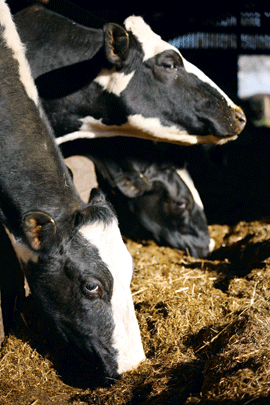Dried lucerne could supplement forage stocks

Farmers faced with ever-tightening forage stocks are being advised to consider adding dried lucerne to rations.
Doing so could help boost the proportion of forage while helping to reduce the consequences of acidosis, according to Trevor Rees, ruminant product manager for Dengie Crops.
“A significant proportion of livestock farmers went into the winter knowing forage supplies would be tight,” he says.
“Now, halfway through the housing period, many of them are having to re-assess stocks and make detailed plans until turnout, faced with a shortage of the normal forage replacers.”
According to Mr Rees, feeds such as brewers’ grains, citrus pulp, beet pulp and distillers products are all in short supply and it may be difficult to secure sufficient supplies to last until turnout. He also believes clamp or baled silage for sale will be hard to come by.
“Many cows have suffered from poor rumen health and Sub-Acute Rumen Acidosis as a consequence of acidic grass silages and a higher proportion of concentrates in the diet. Chopping and changing between feeds designed to stretch silage stocks will only add to rumen health problems.
“One feed that is in good supply is dried lucerne and it can help complement existing forages, provide a good source of fibre which incorporates well in TMR rations without dropping energy density and help reduce problems associated with high acid loads in the rumen.
“Dengie dried lucerne is high temperature dried and chopped to 2-4cm, ready for inclusion in mixed rations. With a pH of 6.5-7 dried lucerne is a natural buffer to low pH silages and the structure of the fibre promotes an increase in rumination and saliva production. At 88% dry matter it will also help get mixed diets close to the optimum of about 45% DM.
“Incorporating dried lucerne will help stretch forage stocks, ensure diet consistency until turnout and promote improved rumen health,” Mr Rees concludes.
